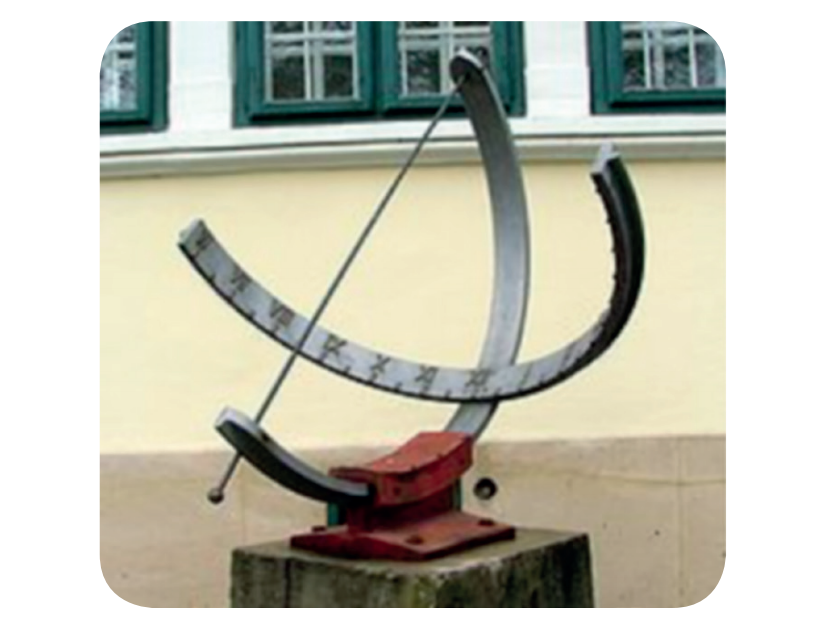



Equipment for the teacher: https://www.sikovne-ruce.eu/napady/slunecni-hodiny/
List of practical (research) activities:
Description – a brief summary: The goal of the activity is to get acquainted with different types of clocks.
| Work content | Time | Material and equipment needed | Teacher’s activity | Pupils’ activity | |
|---|---|---|---|---|---|
|
Introduction to topic - motivation |
Excursion to see sundials in the vicinity of the school | 2 lessons |
Notebook for recording sundials’ time, a pencil
|
Describes the importance of sundials. Manages and assesses pupils’ activities. |
In the form of a group work, they make drawings of sundials.
|
|
Pre-laboratory preparation
|
Dividing pupils into groups, motivation, formulation of the target, assessment, a worksheet. | 30 minutes or based on the distance of sundials |
Notebook for recording sundials’ time, a pencil
|
Divides pupils into groups, motivation, formulates the target, introduces the assessment to pupils, distributes the worksheets, supervises pupils when working, and manages the transfer. |
Transfer to the place of sundials, complete the worksheet with tasks, cooperate within the group, and ask the teacher questions.
|
|
Practical (research) activity
|
Making a sundial. |
45 Minutes
|
Notebook for recording sundials’ time, a pencil, a camera.
|
Pays attention to pupils.
|
They make the sundials.
|
|
Evaluation of lessons
|
Summary, advantages and disadvantages of sundials, presentations. |
45 Minuten
|
A projector, a computer.
|
Controlled discussion with pupils.
|
Characteristics of sundials in a season.
|

Pic 82: Polos
(Source: https://cs.wikipedia.org/wiki/Polos)